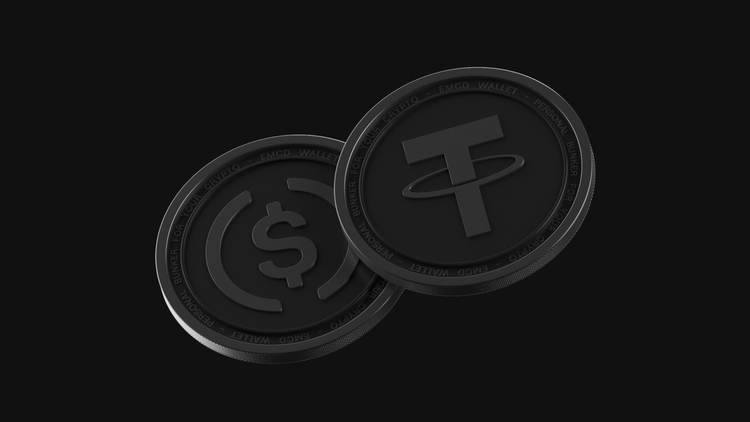Crypto and Inflation: Can Digital Assets Really Protect Value?

For decades, inflation has quietly reduced the real worth of savings. As central banks expanded money supply during global crises, purchasing power fell and investors searched for alternatives. Businesses and individuals alike are exploring whether digital assets can serve as a modern hedge against currency devaluation.
What inflation is and why it matters
Inflation is the gradual rise in prices that decreases what money can buy. In practical terms, it means every unit of currency loses part of its value over time. From groceries to housing, the effects reach every part of the economy. Even moderate inflation, targeted around 2% in most countries, reduces long-term savings unless they are actively invested. As a result, many investors look for assets that can protect against inflation, seeking stability when fiat currencies weaken.
How does crypto protect against inflation?
Bitcoin was designed precisely to resist inflationary pressures. Its creator, Satoshi Nakamoto, introduced a fixed supply of 21 million coins and a transparent issuance schedule that halves every four years. This scarcity means Bitcoin acts as a hedge against inflation in the long term: its limited nature contrasts sharply with fiat currencies that can be printed endlessly.
Research from Choi and Shin confirms that Bitcoin prices often rise during inflationary periods, reflecting investor expectations of currency debasement. However, the same studies show that Bitcoin does not behave like a perfect store of value in every situation. It can appreciate as a hedge but decline during market stress, meaning it works best for those who understand how long-term scarcity affects price dynamics.
Other cryptocurrencies share similar anti-inflation features. Assets like Ethereum have mechanisms to burn transaction fees, reducing supply over time. At the same time, stablecoins, digital tokens pegged to fiat currencies, combine the benefits of blockchain with protection from price swings, giving users practical tools for international payments and treasury management.
Bitcoin vs gold: hedge, not a haven
Both gold and Bitcoin limit supply, making them natural comparisons. Yet their behaviour under stress differs. Gold prices typically rise when uncertainty increases, while Bitcoin often falls during panic-driven sell-offs. Economists describe Bitcoin vs gold as a hedge, not a safe haven.
Still, in regions affected by hyperinflation, such as Venezuela or Turkey, Bitcoin adoption has grown precisely because it allows people to move and store wealth independent of local banking systems. Its decentralized nature ensures that no single authority can devalue it.
| Asset | Hedge Against Inflation | Reaction to Uncertainty | Accessibility |
| Gold | Moderate | Strong safe haven | Physical custody required |
| Bitcoin | Strong | Volatile | Fully digital, borderless |
| Stablecoins | Neutral (price-pegged) | Stable | Ideal for payments |
Stablecoins and practical protection for businesses
While Bitcoin dominates headlines, stablecoins like USDT and USDC have become the real drivers of financial innovation. Their value is tied to fiat currencies, but they move across blockchains in seconds, making them efficient for cross-border and B2B payments. Businesses use stablecoins to hedge against currency swings, pay international partners, or park funds in a digital format that retains value.
Platforms such as EMCD Wallet enable companies to hold both crypto and stablecoins safely, track performance, and transact instantly without relying on banks. Combined with Coinhold, EMCD tool for earning rewards from held assets, users gain an easy way to manage digital reserves while maintaining liquidity for operations.
Real use: protecting business value with EMCD tools
In times of high inflation, cash loses value quickly. By integrating digital finance into their workflows, companies can convert revenue into crypto or stablecoins, send payments abroad, and manage assets transparently. EMCD ecosystem offers crypto processing, mining income management, and non-custodial wallets - all designed to give users more control over how value moves and grows.
A business that relies on predictable income streams can stabilise its operations by converting profits into stablecoins via EMCD Wallet and later reinvesting through Coinhold. This approach helps reduce exposure to currency volatility and operational risk while improving transaction efficiency.
Risks and long-term perspective
Cryptocurrency markets remain young and volatile. Prices fluctuate, and regulation evolves across jurisdictions. For investors and companies, understanding these risks is crucial. Bitcoin’s inflation-hedging qualities depend on adoption rather than speculation. Stablecoins introduce counterparty and compliance risk, which must be managed through licensed providers.
Diversifying between traditional assets, crypto, and stablecoins helps reduce exposure to any single variable. Platforms like EMCD focus on transparency, security, and clear verification, features that support responsible and compliant use of digital assets.
Conclusion
Cryptocurrency is a response to one of the oldest financial challenges: inflation. It offers programmable scarcity, independence from monetary policy, and faster, borderless transactions. While Bitcoin’s volatility prevents it from being a perfect safe haven, its fixed supply makes it a credible long-term store of value. Stablecoins, meanwhile, bring that stability into everyday business operations.
As inflation continues to test economies, crypto provides both individuals and organisations with tools to preserve purchasing power and manage value effectively. With EMCD integrated products, Wallet and Coinhold users gain a transparent, practical, and secure way to adapt to an era where money constantly changes.




